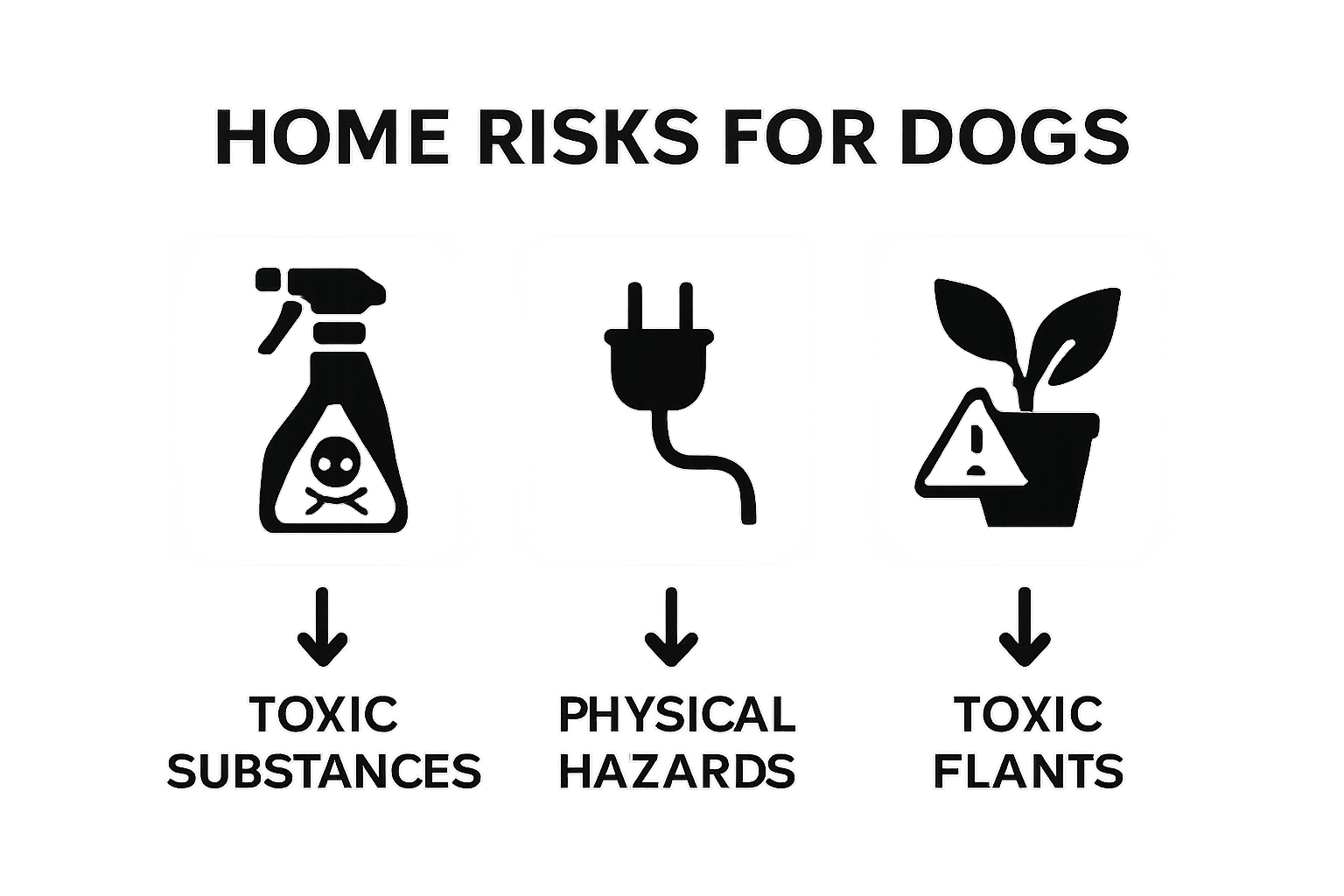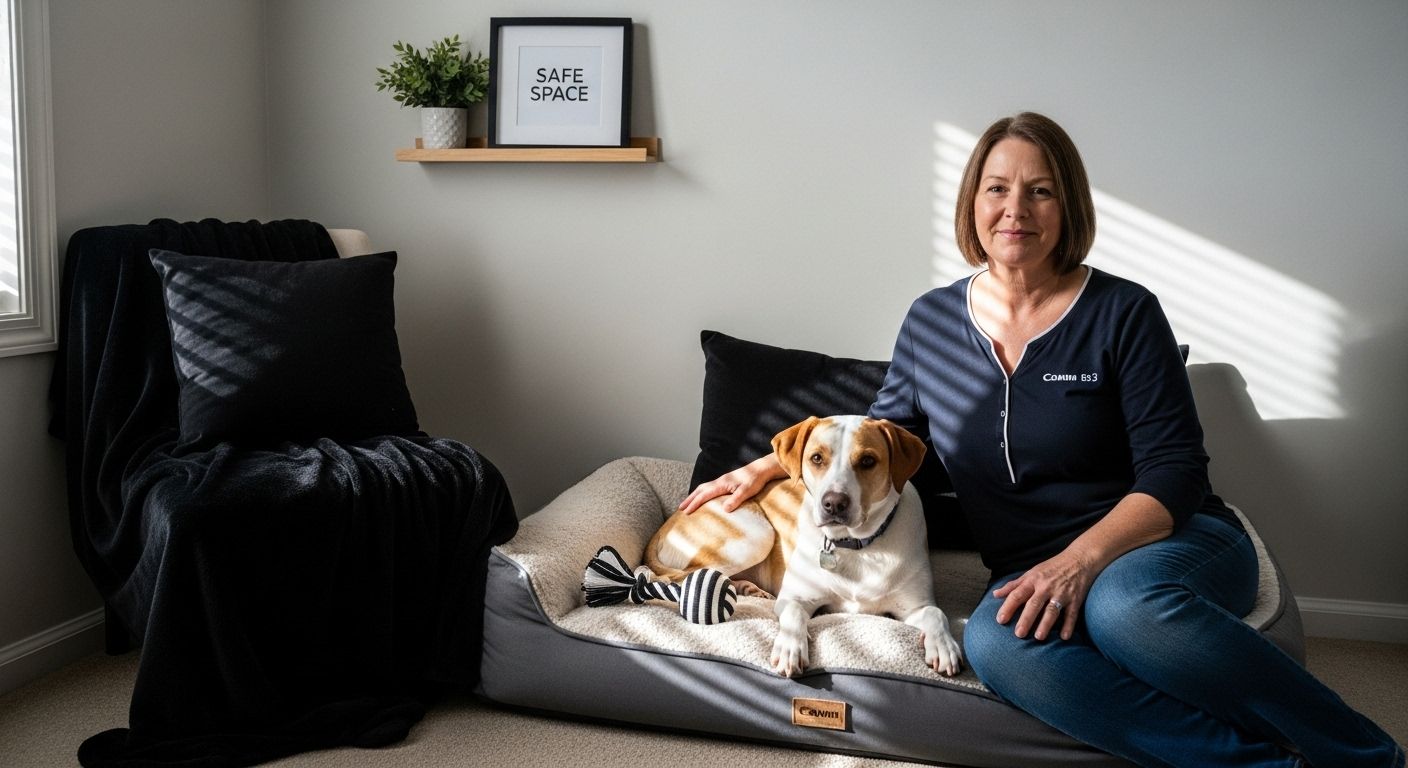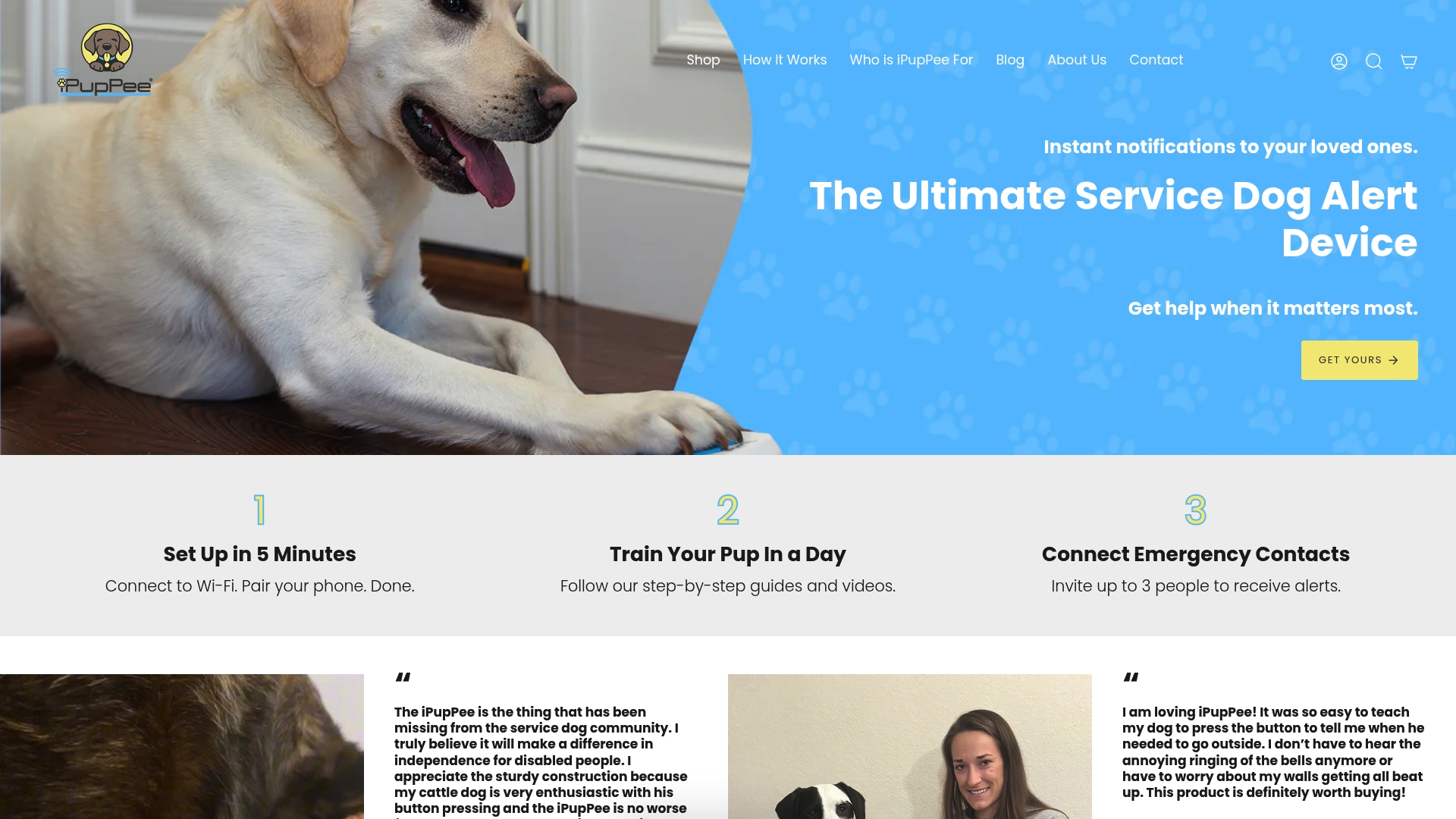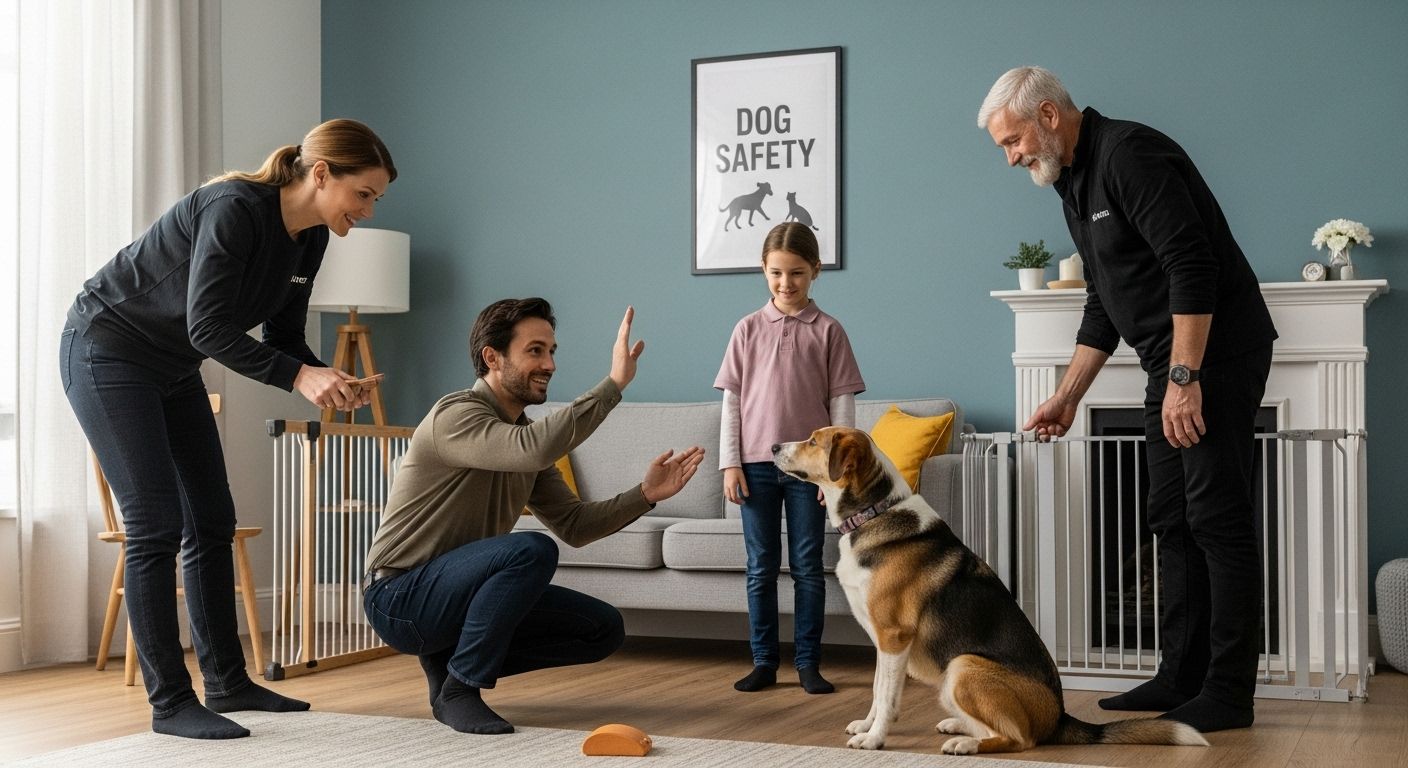Most people think their homes are the safest place for their dogs. After all, your own living room feels like a haven, right? Yet over 90 percent of pet emergency room visits happen because of accidents or hidden hazards inside the home, not outside. So the real risk for dogs usually starts with overlooked household dangers—not the outside world.
Table of Contents
- What Is Dog Safety At Home And Why Does It Matter?
- Key Hazards In The Home Environment For Dogs
- Understanding Safe Spaces And Their Importance
- How To Create A Dog-Friendly Living Space
- Real-World Impacts Of Dog Safety On Health And Behavior
Quick Summary
| Takeaway | Explanation |
|---|---|
| Identify potential hazards at home | Regularly inspect your living space for toxic substances and physical dangers to protect your dog. |
| Create designated safe spaces | Provide areas where your dog can retreat to feel secure and reduce stress within the home. |
| Implement environmental design strategies | Use durable, non-toxic materials and set clear paths to enhance your dog’s safety and comfort. |
| Recognize the impact of safety on behavior | Understand that a safe environment influences your dog’s emotional stability and social behavior. |
| Ensure consistent safety protocols | Regularly review and update safety measures to promote long-term health and well-being for your dog. |
What is Dog Safety at Home and Why Does It Matter?
Dog safety at home represents a comprehensive approach to creating a secure, supportive environment that protects both pets and their human companions from potential risks and hazards. This concept goes beyond simple precautions and involves understanding how to anticipate, prevent, and manage potential dangers within a home setting.
Understanding Home Safety Foundations
At its core, dog safety encompasses a holistic strategy that addresses physical, emotional, and environmental factors that could compromise a dog’s wellbeing. Read more about our comprehensive safety guidelines, which outline critical considerations for maintaining a secure living space.
Key aspects of dog safety include:
- Identifying and removing potential physical hazards
- Creating designated safe spaces for your dog
- Establishing clear boundaries and training protocols
According to the American Society for the Prevention of Cruelty to Animals, understanding dog safety is crucial because it directly impacts a pet’s health, longevity, and quality of life. Dogs rely entirely on their human companions to create an environment that supports their physical and psychological needs.
Psychological and Physical Protection
Safety at home is not just about preventing physical injuries but also about creating an environment that supports a dog’s mental well-being. This means considering factors like stress reduction, providing consistent routines, and ensuring the dog feels secure and protected.
A well-designed home safety strategy helps prevent accidents, reduces the likelihood of behavioral issues, and promotes a strong, trusting relationship between dogs and their owners. By proactively addressing potential risks and creating a supportive environment, pet owners can significantly enhance their dog’s overall quality of life and minimize unexpected health or safety challenges.
Key Hazards in the Home Environment for Dogs
Dog safety involves recognizing and mitigating numerous potential hazards that exist within residential spaces. From toxic substances to physical dangers, understanding these risks is crucial for protecting canine companions and preventing potentially life threatening situations.
Toxic Substances and Chemical Risks
Learn more about protecting your dog from household dangers, particularly those lurking in everyday environments. Households contain numerous substances that can be extremely dangerous to dogs, even in small quantities.
Common toxic substances include:
- Cleaning chemicals and detergents
- Certain human medications
- Pesticides and rodent control products
- Automotive fluids like antifreeze
According to the ASPCA Animal Poison Control Center, many household plants can also pose significant risks. Plants such as sago palm, azalea, and oleander can cause serious health complications if ingested, ranging from mild gastrointestinal distress to potential organ failure.

Physical and Environmental Dangers
Beyond chemical risks, dogs face numerous physical hazards within home environments. Sharp edges, unstable furniture, electrical cords, and small objects that could be swallowed represent significant threats to canine safety. Dogs are naturally curious creatures, which makes them more susceptible to accidentally encountering dangerous items.
The table below summarizes some of the most common types of household hazards for dogs, their examples, and potential health effects.
| Hazard Type | Example Substances/Items | Potential Effects on Dogs |
|---|---|---|
| Toxic Chemicals | Cleaning products, antifreeze | Poisoning, organ failure, death |
| Human Medications | Painkillers, antidepressants | Vomiting, seizures, organ damage |
| Dangerous Plants | Sago palm, azalea, oleander | Gastrointestinal upset, toxic reactions |
| Physical Hazards | Sharp edges, small objects | Cuts, choking, intestinal blockage |
| Unstable Furniture | Bookshelves, wobbly tables | Injuries from falling |
| Electrical Hazards | Loose cords, exposed wires | Electrocution, burns |
| Pesticides/Rodenticides | Chemical pest control products | Neurological issues, death |
Pet owners must create intentional spaces that minimize risk while allowing dogs to explore and feel comfortable. This involves strategic placement of hazardous items, using protective barriers, and maintaining a consistently monitored environment that prioritizes the dog’s physical well-being.
Understanding Safe Spaces and Their Importance
Safe spaces play a critical role in a dog’s psychological and physical well-being, serving as personal sanctuaries where they can retreat, relax, and feel secure within their home environment. These designated areas are more than just physical locations they represent psychological comfort zones that help dogs manage stress and maintain emotional equilibrium.
Psychological Benefits of Safe Spaces
Learn more about creating effective safe zones for your dog, which can significantly improve their overall quality of life. According to research published in the International Journal of Environmental Research and Public Health, designated safe spaces can help dogs regulate stress and enhance their welfare, particularly when exposed to environmental stressors.
Key psychological advantages of safe spaces include:
- Reducing anxiety and fear responses
- Providing a sense of control over their environment
- Offering a predictable and consistent retreat
- Supporting emotional regulation
Design and Implementation of Safe Spaces
Creating an effective safe space involves understanding a dog’s individual needs and preferences. This means selecting an area that feels enclosed yet not confining, quiet yet accessible, and comfortable without being overly restrictive. The space should include elements that provide sensory comfort such as soft bedding, familiar scents, and minimal external disturbances.
Safe spaces are particularly crucial for dogs experiencing transitions, recovering from medical procedures, or dealing with environmental stressors like loud noises or unfamiliar visitors. By offering a consistent, secure location, dog owners can help their pets develop resilience and maintain emotional stability in dynamic home environments.
This table highlights the key psychological and physical benefits of providing safe spaces for dogs in the home.
| Benefit Type | Description |
|---|---|
| Reduced Anxiety | Safe zones lower stress and help manage fear responses |
| Sense of Control | Dogs gain a predictable area, supporting emotional security |
| Privacy & Retreat | Provides a consistent, quiet refuge to decompress |
| Recovery Support | Aids in convalescence from medical procedures or stressors |
| Behavioral Stability | Supports emotional regulation and consistent routines |

How to Create a Dog-Friendly Living Space
Creating a dog-friendly living space requires thoughtful design and strategic planning that prioritizes both canine safety and comfort. This approach goes beyond simple accommodation, involving a comprehensive understanding of how dogs interact with their environment and what elements contribute to their overall well-being.
Environmental Design Principles
Explore our comprehensive guide to optimizing home spaces for dogs, which provides deeper insights into creating harmonious living environments. According to Penn State Extension, designing pet-friendly spaces involves carefully considering multiple environmental factors that support dogs’ physical and psychological needs.
Key environmental design considerations include:
- Selecting durable, non-toxic flooring materials
- Creating clear pathways and movement zones
- Establishing boundaries without feeling restrictive
- Incorporating temperature-controlled areas
Sensory and Behavioral Accommodations
A truly dog-friendly living space recognizes and supports canine sensory experiences and natural behavioral patterns. This means designing areas that allow dogs to observe their surroundings, provide comfortable resting spots, and minimize potential sources of stress or overstimulation.
Consider incorporating elements that engage a dog’s senses while maintaining a structured environment. Soft bedding, strategic furniture placement, noise reduction strategies, and designated play areas can transform a standard living space into a comprehensive canine-friendly habitat that promotes security, comfort, and healthy interaction.
Real-World Impacts of Dog Safety on Health and Behavior
Dog safety extends far beyond physical protection, directly influencing a dog’s psychological well-being, social interactions, and long-term health outcomes. Understanding these complex interconnections helps pet owners recognize that safety is not just about preventing immediate harm but about creating comprehensive environments that support holistic canine development.
Behavioral Health Implications
Discover more about the connection between safety and dog behavior, which provides insights into the profound psychological impacts of environmental conditions. According to a research study in the International Journal of Environmental Research and Public Health, unsafe home environments and lack of proper supervision are directly associated with increased risks of aggressive behaviors and potential injury incidents.
Key behavioral health outcomes linked to safety include:
- Reduced anxiety and stress responses
- Enhanced emotional stability
- Improved social interaction capabilities
- Decreased likelihood of fear-based aggression
Physical Health and Long-Term Wellness
A secure and well-managed environment contributes significantly to a dog’s physical health beyond immediate injury prevention. Consistent safety protocols can mitigate chronic stress, which is known to compromise immune system functioning and potentially accelerate age-related health deterioration.
By prioritizing comprehensive safety strategies, dog owners can create environments that not only protect against immediate physical risks but also support long-term psychological resilience, social adaptability, and overall quality of life for their canine companions.
Bring True Safety Home with Smart Communication for Your Dog
You have just learned how important it is to protect your dog from hidden dangers and to create safe spaces that support their well-being. But even if you follow every tip, accidents and communication challenges can still happen. One of the biggest pain points in dog safety at home is not knowing what your dog needs in real time. Imagine if your dog could alert you instantly when they need help or want to go out. This peace of mind is especially critical for new puppy owners, service dog handlers, and those who value independence or live alone.

Give your furry friend the ability to communicate and keep your home safer. Discover how the iPupPee alert device at ipuppee.com transforms everyday safety for you and your dog. See how easy communication builds confidence, prevents stress, and delivers freedom to both pets and their owners. Ready to create a safer and more connected home? Explore the innovative iPupPee device and check out our blog for practical tips on safety and training now. Empower your dog with a voice and experience the difference today.
Frequently Asked Questions
What are the common hazards for dogs at home?
Common hazards for dogs at home include toxic substances such as cleaning chemicals, certain human medications, and household plants like sago palm and azalea, as well as physical dangers like sharp edges, unstable furniture, and small objects that can be swallowed.
How can I create a safe space for my dog?
To create a safe space for your dog, select an area that feels enclosed yet not confining, quiet but accessible, and comfortable. Include elements that provide sensory comfort, like soft bedding and familiar scents, to help your dog feel secure.
What role does dog safety play in their behavioral health?
Dog safety significantly impacts behavioral health by reducing anxiety and stress responses. A secure environment enhances emotional stability and social interaction capabilities, ultimately decreasing the likelihood of fear-based aggression.
What are effective ways to dog-proof my home?
To dog-proof your home, identify and remove potential hazards, secure hazardous items like cords and chemicals, create clear pathways, and establish boundaries without being restrictive. Additionally, consider using protective barriers and regularly monitoring your dog’s surroundings.

